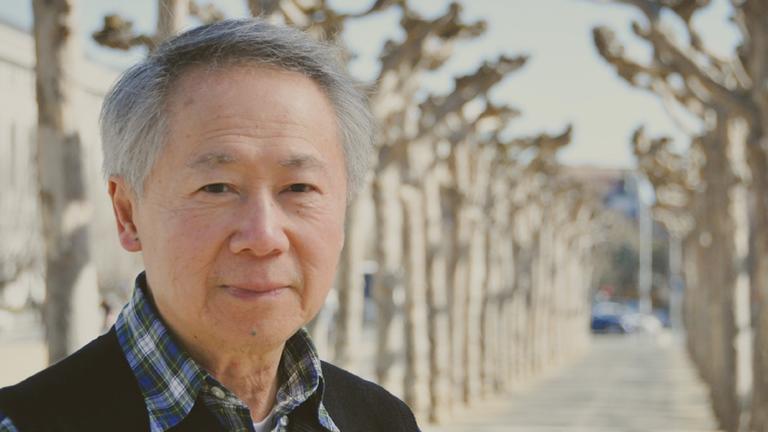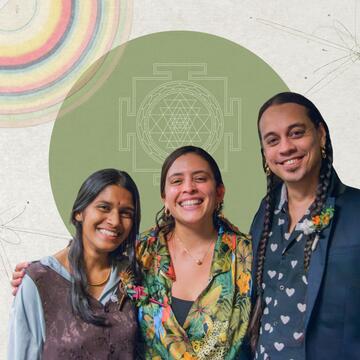Chair Christine Brooks spotlights CIIS’ fully online M.A. in Expressive Arts Coaching and Community Building—a transformative program that blends creativity, connection, and empowerment.

Existential Psychotherapies: An Introduction
While the term “existential” conjures up questions like “why am I here?” and issues about meaninglessness, death, and our limited lifespan, existential therapy is about much more
Psychotherapy provided near the end of a patient’s life focuses on existential themes. While the term “existential” conjures up questions like “why am I here?” and issues about meaninglessness, death, and our limited lifespan, existential therapy is about much more: an awareness of oneself, one’s freedom to make choices, and one’s capacity to remove obstacles to “authentic existence.”
Over the years, existential therapy has taken many forms, resulting in confusion and vagueness as to what exactly is an existential approach. On a popular level, the orientation has been routinely dismissed as nothing more than an amorphous and scattered way of “being” obviously left over from the tofu-brained New Age era of the 1960’s.
Existential therapy is not traceable to any single founding figure, as was the case with other popular forms of psychotherapy like psychoanalysis or cognitive therapy. Furthermore, there are many existential therapies. To date, we have the European traditions: existential analysis, daseinsanalysis, existential-analytic therapy, logotherapy, Laingian therapy. Over on the American side are existential-humanistic therapy, reality therapy, Gestalt therapy, client-centered therapy, existential-integrative therapy, and brief existential therapies. Last but not least, there are those approaches with an “Eastern” emphasis, such as Ken Bradford's existential contemplative therapy and my own existential Taoist psychotherapy. In the words of Mike Cooper, existential therapists are “more intertwined in their philosophic orientation” and vary more widely in their actual techniques.
Furthermore, the credibility of existential approaches is just now beginning to be elevated in the eyes of those preoccupied with “evidence-based” (ie, empirically validated) support for the viability of any and all psychotherapies (think of the exacting requirement of HMOs and health insurance companies for reimbursement of treatment fees). Writings by Kirk Schneider and others allude to the need for relevant peer-reviewed studies. The paucity of published empirical outcome work remains, but could well be viewed as a temporary state (Schneider KJ, Bugenthal JFT, and Pierson JF. The Handbook for Humanistic Psychology. Sage Publications: Thousand Oaks, CA; 2001).
Nuts and Bolts of Existential Thought
Since its inception in the 1950’s the existential movement in psychology and psychiatry has attempted to forge an understanding of people based not only on observable behavior patterns (á la the DSM), but also on their unique condition as living beings who exist, have a life narrative, and are always in the dynamic process of changing and becoming. The existential attitude or posture (my preferred term) is one that transcends and includes systematic theoretical orientations. Its focus is on “lived experience” which is unfortunately overshadowed by the predominant emphasis on capturing the essence of personhood in theoretical and diagnostic boxes. Central historical figures in the field have posited the existence of an innate human tendency to resist or revolt against such dehumanizing objectification and reductionism.
The word existential frequently evokes themes of gloom and doom, alienation, ambiguity, and uncertainty, concepts that are recurrent in the works of existentialism’s European forebears. In contrast, to the American humanistic overemphasis on being eternally positive, existential therapists continually stress the need to not run from the dark side of existence. In David Richo’s remarkable book, The Five Things We Cannot Change (Boston, MA: Shambhala Publications; 2006), the reader is challenged to embrace certain fundamental unchangeable facts of life: (1) everything changes and ends; (2) things do not always go according to plan; (3) life is not always fair; (4) pain is a part of life; (5) people are not loving and loyal all the time.
The existential challenge for both clients and therapist is how to live life in the face of certain inescapable “givens” of existence. Although it’s said that the only certainties in life are death and taxes, the existential givens vary from one author to the next. Irvin Yalom, for one, has proposed a list of four definitive sources of “ontological insecurity;” death, freedom, isolation, and meaninglessness.
Central to the ontological givens is finiteness. Very simply, this is the concrete reality that life as we know it will end. For millions of aging Baby Boomers, the End of Days looms large. As the years grow short, there is the inevitable isolation resulting from the loss of significant others as well as the deterioration of mental and physical capacities. On the other end of the chronological spectrum, tens of thousands of “millennials” (18-30 year olds) are being pummeled by chronic post-economic-down-turn unemployment of under-employment, moving back in with parents, and inability to start their own families. Even more important, they are roundly bewildered and destabilized by having gobs of time on their hands. A young client seeing me at the lowest end of my sliding scale fees bemoaned: “I live in a great country that prizes freedom to choose but I have nothing to choose from!” All this has added up to nothing short of a crisis of meaning.
Existential Therapy
What, then, is existential therapy all about? The overarching aim is the achievement of a “genuine encounter,” that is, to be truly present with another human being. Authentic healing, transformation and change begins, proceeds, and ends with this. Schneider, for one, speaks of such core aims in existential-humanistic therapy to (1) help clients become present to themselves and others; (2) help clients to experience ways in which they mobilize and block themselves from fuller presence; (3) help clients take responsibility for the choices that they make in their lives; and (4) help clients choose ways to face, and not avoid, the existential givens- finiteness, ambiguity, isolation, and meaninglessness.
A mentor of mine, the late existential psychoanalyst Murray Bilmes, once said that “the most difficult thing in life is to see it as it really is.” As often as not, this is frequently the starting point of psychotherapy with an existential orientation. Put another way, the challenge before the client is to call things in one’s life by their real names. Many if not most contemporary Americans refuse to acknowledge that some things they experience as inevitable in life are actually the outcome of acts of agency- ie, having made choices. In this vein, existentialists refer to existential guilt- guilt the result from having wronged or cheated oneself, in contrast to neurotic guilt which is traceable to having wronged another person. Anything short of deep and thorough candid confrontation with one’s self is tantamount to a compromise of one’s own authenticity and autonomy.
Existential therapy attempts to enable this confrontation of oneself. The existential process may involve such specific procedures as: (a) clarifying choices and consequences; (b) sitting or being with the discomfort of powerful feelings and bodily sensations evoked by denied or buried memories; and (c) engaging in “more of the same” symptom behaviors that initially propelled the patient to seek therapy (paradoxic intention). Within the context of a safe “holding” therapeutic setting, the patient is gently and firmly challenged to confront the change to make (or acknowledge) choices and to take responsibility for acting on those decisions.
The Verdict
Existential psychotherapies are grounded in the view that healing and change requires a genuine presence or authentic encounter between two human beings. Within this potent context, the patient is encouraged to confront, in an unwavering and uncompromising manner, the thrust of his or her life situation, given both its inevitabilities and its possibilities.
Related Academic Program
Related News
At Human + Tech Week in San Francisco, Bruce Alderman of the Blue Sky Leaders program revealed how human wisdom and presence redefine leadership in the AI era.
A look inside a Blue Sky Leaders program weekend workshop, led by Greg Thomas of the Jazz Leadership Project.



